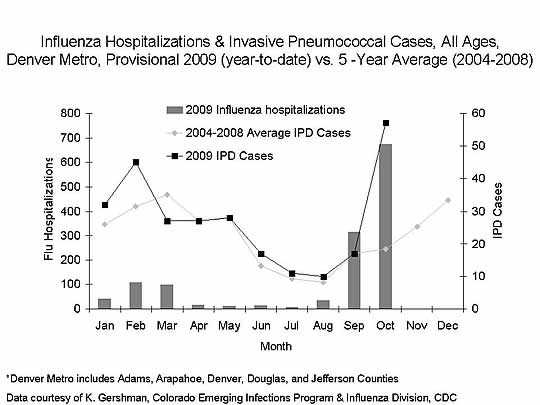Content on this page was developed during the 2009-2010 H1N1 pandemic and has not been updated.
- The H1N1 virus that caused that pandemic is now a regular human flu virus and continues to circulate seasonally worldwide.
- The English language content on this website is being archived for historic and reference purposes only.
- For current, updated information on seasonal flu, including information about H1N1, see the CDC Seasonal Flu website.
Questions & Answers
2009 H1N1 Flu In The News
November 24, 2009 6:00 PM ET
2009 H1N1 and Seasonal Influenza Infections and Invasive Pneumococcal Disease
Some of CDC's Active Bacterial Core surveillance (ABCs) sites have seen an increase in serious cases of pneumococcal disease coincident with increases in influenza-associated hospitalizations. CDC has been working with state and local public health officials in Colorado for example concerning its ABCs site in the Denver Metro area to collect additional data on pneumococcal disease cases.
There is good evidence that 2009 H1N1 influenza may be responsible for this increase in invasive pneumococcal disease (IPD) cases in the Denver Metro area. (5-year average number of cases in October, ~20; total number in October 2009, 58).
The increase in IPD cases in the Denver Metro area is primarily among younger adults with 36 out of 58 (62%) cases occurred among 20-59 year olds. In a typical non-pandemic year, most IPD cases occur among persons 65 years of age and older.
What occurred in Denver is likely an indicator of what is happening in other parts of the country. Data shown below is preliminary and subject to change upon further investigation.
More information is available on preventing pneumococcal infections secondary to seasonal and 2009 H1N1 influenza.

Get email updates
To receive weekly email updates about this site, enter your email address:
Contact Us:
- Centers for Disease Control and Prevention
1600 Clifton Rd
Atlanta, GA 30333 - 800-CDC-INFO
(800-232-4636)
TTY: (888) 232-6348 - Contact CDC-INFO


